I have a few customers who purchase mainly downloads from Kalimba Magic. One wants to get the music because he is interested in using it in his video work. Another just likes to hear what new music is available for the kalimba. But there is a growing group of people who see the downloads as a collection of music that is representative of what a particular kalimba style or tuning has to offer.
As such, the download is a key that opens some of the secrets that the kalimba has to offer.
Several first-time customers purchase one or more instructional downloads first. A few days later, they purchase a kalimba. I have learned that if they liked the download’s music and its approach, they came back and bought the kalimba that the download was written for. I have seen a few customers purchase downloads for four, five, or six different kalimbas before they chose an instrument to purchase.
At $5 to $10 each, the downloads aren’t exactly free. Yet buying even six downloads is much less expensive, in the long term, than buying a kalimba that you end up not using or not enjoying because its natural music is not the music that will really please you. In the download you can see the kind of music that is best for this specific kalimba form, you can see how it is taught, and you can actually hear the songs played too. It is a preview worth its weight in gold
Now, please bear with me for a little while as I talk about the process whereby a new book or download is created:
I have been a serious kalimba player for 32 years this month, and I’ve been playing around with different tunings and kalimba note layouts for 17 years. With this much experience on a wide variety of kalimbas, I can pick up a new kalimba layout or kalimba tuning, fiddle with it for a few minutes, and grasp a significant portion of what it is about and what music can be done on it. My brain is just built that way now
If I decide to create a book about an instrument with a new layout or tuning, and I take this kalimba on my daily morning “kalimba / physical health / mental health” walk for a week, I can come up with enough music to play on that kalimba to fill a book
It might take me two or three weeks to write out that music and to lay out that book, and inevitably I will decide some pieces of music are a bit lame, while other sexy new riffs or songs will find their way into the book.
It then takes me about a week to record the music in the book so each song in the new book can be heard. Inevitably, toward the end of the book, it becomes evident that it’s going to take more time than I really can spare to record every song. That is when I use the assistance of my computer and KTabS (Kalimba Tablature Software) to produce recordings that take the place of me playing. They are not perfect, but they get the job done. As I record, I inevitably rewrite some of the pieces to make them more playable, and then I have to go back and change the tablature in the book.
The downloads in their current form are quite an upgrade from their previous incarnation. The old downloads are just a zip file with a collection of 20 to 66 different songs in tablature (PDF; usually accompanied by MP3 sound files) and a AAA_README.txt file to give you an idea of how to tackle the mass of music you have just downloaded.
By contrast, the new instructional downloads are really quite advanced. I spend the time in layout and design to create an entire book, 40 – 100 pages long, which is then thoughtfully edited for maximum clarity and understandability. Each exercise or song has between a few sentences and a few paragraphs explaining how I suggest you approach the song, or what the song means, or some special feature of the exercise that will be useful to learn for some upcoming song.
And most important – the download has live links, so you never have to worry about a CD again (a major improvement over the hard copy books). You just click on a song title (or the tablature itself in the newest downloads) and your web browser will be driven to download and play the sound file that goes with the tablature.
So, that is what my process is about. To put all those words and music into a little bottle – it takes me about 100 hours to create a new kalimba book or instructional download. And a lot of love goes into each one of these downloads.
Were you to fall in love with the music of a particular kalimba or tuning or layout, and you acquired the download for it, and then the actual kalimba, you would not breeze through the book in a few days. If you want to become a really fluid player on the material in that download, you would spend a good deal of time on it. You might find enough gold in that book or download to last you weeks or months or even more than a year. When I create instructional materials, that is my goal: to give you a compass that will guide you for a very long time.
So the downloads clearly can have multiple uses. As electronic documents they take up no physical space; they can give you a great inside look at what a kalimba can do, and as an educational tool they are comprehensive, full of tips and information and playing instruction for the particular kalimba in which you are interested. You can hear the songs they teach from the online MP3’s that are part of the download. You can take them anywhere your electronic devices go and they are formatted to show perfectly on those devices as well as your desktop computer.
The below download list is not exhaustive – we have lots more “primitive downloads” of the ZIP file variety. But this is the current list of our edited-book-level downloads – just a single PDF that organizes all of the songs, exercises, and instruction, and has live links to each sound file
The media player in each of the download descriptions below plays one representative song from that particular download.
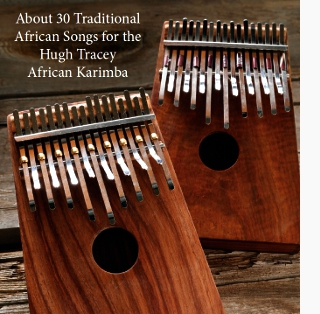 Karimba songs, short and long, from both early field work (A.M. Jones, Hugh Tracey, Andrew Tracey, Paul F. Berliner) and modern recordings. Both 2-phrase karimba music and 4-phrase mbira music. 72 pages / 32 songs.
Karimba songs, short and long, from both early field work (A.M. Jones, Hugh Tracey, Andrew Tracey, Paul F. Berliner) and modern recordings. Both 2-phrase karimba music and 4-phrase mbira music. 72 pages / 32 songs.
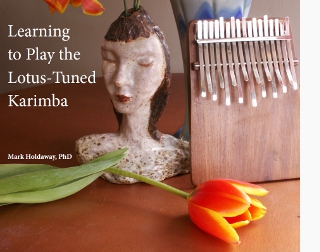 An exploration of the breadth of figures this karimba likes to perform, this is a much simpler place to start than launching into the Lotus Solo. 68 pages / 76 songs.
An exploration of the breadth of figures this karimba likes to perform, this is a much simpler place to start than launching into the Lotus Solo. 68 pages / 76 songs.
 This book teaches kalimba through three different modalities: (1) Games and fun activities that permit the student to explore the structure of the kalimba and music on their own. (2) A numbers-based tablature system that teaches well-known songs with numbers above the words; the numbers are marked on the kalimba tines. (3) The full kalimba tablature system that is used in the other books.
This book teaches kalimba through three different modalities: (1) Games and fun activities that permit the student to explore the structure of the kalimba and music on their own. (2) A numbers-based tablature system that teaches well-known songs with numbers above the words; the numbers are marked on the kalimba tines. (3) The full kalimba tablature system that is used in the other books.
In other words, if you really know nothing about music, or if you have found the tablature in the other download books is too difficult for you right now, start here for success. 32 pages, downloadable MP3s.
 
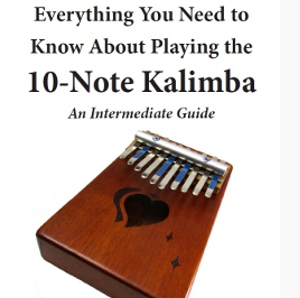 This ebook explores what the 10-Note Kalimba is – the kinds of music and patterns you can do with it. It has a few scales, a few chords, a few songs you know, a few songs you don’t know, several challenging exercises to get your left and right thumbs working together, and a bunch of cool patterns that are both remarkably easy and really good sounding. 58 pages, with downloadable MP3s, formatted for tablet computers.
This ebook explores what the 10-Note Kalimba is – the kinds of music and patterns you can do with it. It has a few scales, a few chords, a few songs you know, a few songs you don’t know, several challenging exercises to get your left and right thumbs working together, and a bunch of cool patterns that are both remarkably easy and really good sounding. 58 pages, with downloadable MP3s, formatted for tablet computers.
 
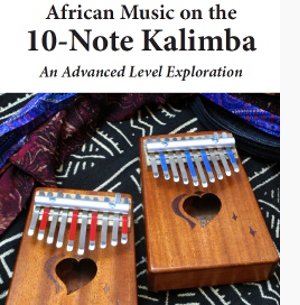 It just so happens that the 10-Note Kalimba can play a lot of traditional African music. You get the full repertoire of the student karimba (ie, Andrew Tracey’s hypothesized original mbira). Additionally, a few of the easier mbira songs can be further simplified to fit convincingly on this tiny monster of a kalimba.
It just so happens that the 10-Note Kalimba can play a lot of traditional African music. You get the full repertoire of the student karimba (ie, Andrew Tracey’s hypothesized original mbira). Additionally, a few of the easier mbira songs can be further simplified to fit convincingly on this tiny monster of a kalimba.
These songs will challenge your concept of music and your concept of African music. These songs will break you out of the complacency of twiddling your thumbs in simple alternating left-right patterns. And these songs will blow your mind and introduce you to the melodic, harmonic, and rhythmic genius of the African mind of 1000 years ago.
 
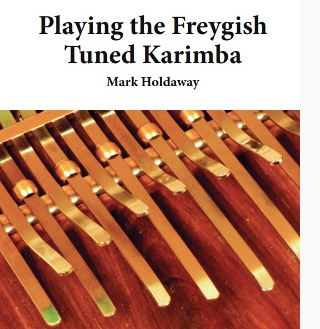 The Freygish-tuned Karimba plays delightful songs, mostly in C harmonic minor. This instrument brings alive baroque melodies and harmonies, romantic music box waltzes, fiery Middle-Eastern music, and hot Latino cumbia – nostalgic, sensual, mysterious and sweet. This kalimba plays unique music that is not played by any other. Utterly charming. 69 pages / 54 songs.
The Freygish-tuned Karimba plays delightful songs, mostly in C harmonic minor. This instrument brings alive baroque melodies and harmonies, romantic music box waltzes, fiery Middle-Eastern music, and hot Latino cumbia – nostalgic, sensual, mysterious and sweet. This kalimba plays unique music that is not played by any other. Utterly charming. 69 pages / 54 songs.
 
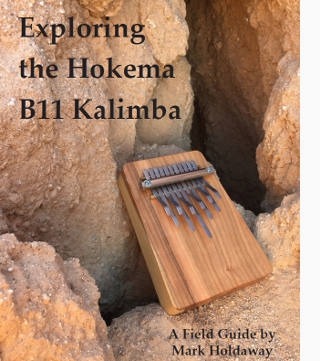 The B11 is a nifty Hokema kalimba – with two more notes than the B9 Sansula, it is harmonically more capable, and tuned to a major key. Its mood is fundamentally different than the Sansula. Beginner through advanced. 74 pages / 64 songs.
The B11 is a nifty Hokema kalimba – with two more notes than the B9 Sansula, it is harmonically more capable, and tuned to a major key. Its mood is fundamentally different than the Sansula. Beginner through advanced. 74 pages / 64 songs.
 
 Nostalgic and whimsical, with a touch of Africa thrown in, this collection explores what ELSE you can do with the I Ching Karimba… besides Per Norgard’s I Ching composition. 68 pages / 15 songs.
Nostalgic and whimsical, with a touch of Africa thrown in, this collection explores what ELSE you can do with the I Ching Karimba… besides Per Norgard’s I Ching composition. 68 pages / 15 songs.
 
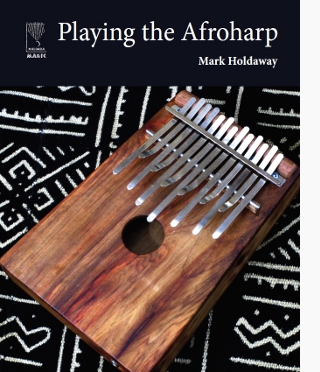 Made in America, the Afroharp was a brief historic competitor to the Hugh Tracey Kalimba, but it went extinct, manufactured last in the 1970’s. Now I put the original Afroharp tuning on the Hugh Tracey Alto Kalimba. Whichever instrument you have, this is the only instructional material for Afroharp tuning in the world. 47 pages / 41 songs.
Made in America, the Afroharp was a brief historic competitor to the Hugh Tracey Kalimba, but it went extinct, manufactured last in the 1970’s. Now I put the original Afroharp tuning on the Hugh Tracey Alto Kalimba. Whichever instrument you have, this is the only instructional material for Afroharp tuning in the world. 47 pages / 41 songs.
 
 The Beautiful E tuning was my first alternative Sansula tuning that totally broke out of the melancholy Sansula feeling. Joyful and energetic, I love this music, and hope you will too! 49 pages / 33 songs.
The Beautiful E tuning was my first alternative Sansula tuning that totally broke out of the melancholy Sansula feeling. Joyful and energetic, I love this music, and hope you will too! 49 pages / 33 songs.
 
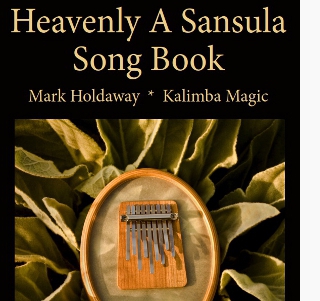 If you tire of the beautiful, melancholic routine of the standard Sansula tuning, try this one – uplifting, but still intuitive and beautiful. 39 pages / 21 songs.
If you tire of the beautiful, melancholic routine of the standard Sansula tuning, try this one – uplifting, but still intuitive and beautiful. 39 pages / 21 songs.
 
 
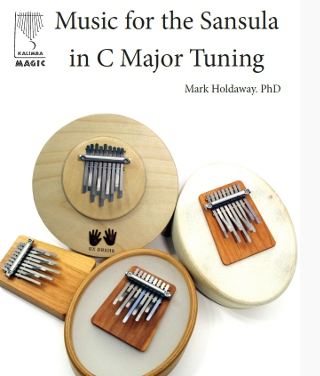 The C Major Sansula Download completes a trio of major-tuned uplifting Sansulas. On most days, the C tuning is my favorite of these three. 48 pages / 32 songs.
The C Major Sansula Download completes a trio of major-tuned uplifting Sansulas. On most days, the C tuning is my favorite of these three. 48 pages / 32 songs.
 
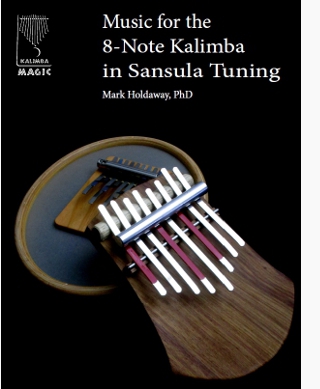 The 8-Note kalimba is a great instrument to start on, but lets face it: you can only play “Twinkle Twinkle Little Star” and “Joy to the World” so many times before you want something different. This mystical C minor tuning is just that. 28 pages / 20 songs.
The 8-Note kalimba is a great instrument to start on, but lets face it: you can only play “Twinkle Twinkle Little Star” and “Joy to the World” so many times before you want something different. This mystical C minor tuning is just that. 28 pages / 20 songs.
 
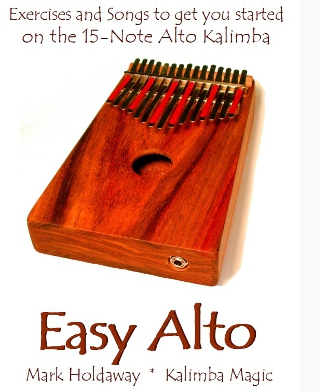 Are you mystified by, and intimidated by, kalimba tablature? Do you feel you are starting from square one? This download gently leads you by the hand and helps you make friends with your Alto Kalimba. 53 pages / 47 songs.
Are you mystified by, and intimidated by, kalimba tablature? Do you feel you are starting from square one? This download gently leads you by the hand and helps you make friends with your Alto Kalimba. 53 pages / 47 songs.
 
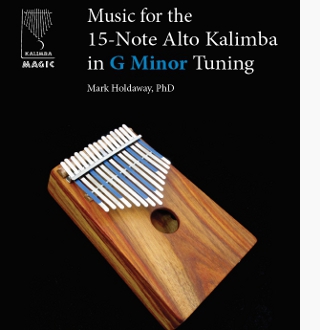 The second most common tuning for the usually-major Alto Kalimba is G minor. An exploration of what the key of G minor brings to your Alto. (You can retune the Alto to G minor by moving 6 tines down by a half step – a few minutes of work.) Perfect if you are looking for new inspiration. 33 pages / 29 songs.
The second most common tuning for the usually-major Alto Kalimba is G minor. An exploration of what the key of G minor brings to your Alto. (You can retune the Alto to G minor by moving 6 tines down by a half step – a few minutes of work.) Perfect if you are looking for new inspiration. 33 pages / 29 songs.
 
 A collection of songs that are famous and historic. Each song comes in both Basic and Advanced arrangements for the Alto Kalimba in standard G tuning. 56 pages / 21 songs.
A collection of songs that are famous and historic. Each song comes in both Basic and Advanced arrangements for the Alto Kalimba in standard G tuning. 56 pages / 21 songs.
 
The video below is for the final song in the Freygish Karimba download. Yes, it took me three weeks of daily work – about 40 minutes a day – to get this piece to performance level, but it was certainly worth it. Does every download have music of this caliber? No, but this exemplifies what I am aiming for.


Sign up for our newsletter and free resources with your email address:
We pinky promise not to spam you and to only send good stuff.
 Christmas in July 2025
Christmas in July 2025 Patriotic and American Music for Kalimba
Patriotic and American Music for Kalimba